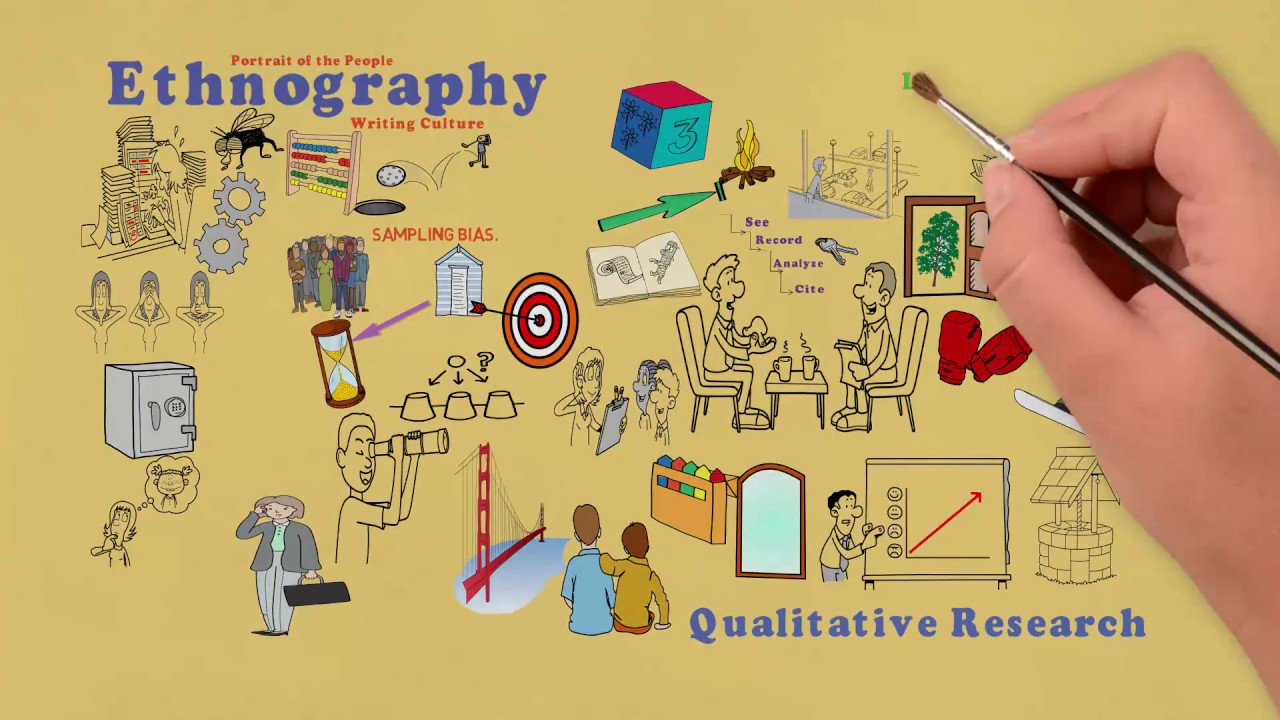Ethnography is the branch of anthropology that involves trying to understand how people live their lives. Unlike traditional market researchers, who ask specific, highly practical questions, anthropological researchers visit consumers in their homes or offices to observe and listen in a non-directed way. Our goal is to see people’s behavior on their terms, not ours. While this observational method may appear inefficient, it enlightens us about the context in which customers would use a new product and the meaning that product might hold in their lives.
The aim of ethnographic research
Ethnographic research is a qualitative study looking at the social interaction of users in a given environment. This research provides an in-depth insight into the user’s views and actions along with the sights and sounds they encounter during their day. It provides the researcher with an understanding of how those users see the world and how they interact with everything around them.
• Ethnographic research include direct observation, diary studies, video recordings, photography and artefact analysis such as devices, which a person uses throughout the day.
• Observations can be made anywhere from the user’s workplace, their home or while they are out with family and friends.
• The length of the studies can vary depending on the research that is being conducted. They can range from a couple of hours of observation, to studies that last several months.
When to use Ethnography?
Ethnography is most useful in the early stages of a user-centered design project. This is because ethnography focuses on developing an understanding of the design problem. Therefore, it makes more sense to conduct ethnographic studies at the beginning of a project in order to support future design decisions (which will happen later in the user-centered design process).
Ethnographic methods (such as participant observation) could also be used to evaluate an existing design – but their true value comes from developing an early understanding of the relevant domain, audience(s), processes, goals and context(s) of use.

Organizational Ethnography
Ethnography is a study of culture, therefore, organizational ethnography looks at the culture of organizations.
Organizational culture exists within the minds of the people who make up that organization, while organizational ethnography is concerned with settings within which social relations take place between actors who are set on particular goals.
This culture evolves over time, contains dominant cultures and subcultures, and is subject to its own rules, rites, myths and symbols.
Corporate ethnography isn’t just for innovation anymore. It’s central to gaining a full understanding of your customers and the business itself. The ethnographic work at my company, Intel, and other firms now informs functions such as strategy and long-range planning.
Research Parameters
Ethnographic research are qualitative, inductive, exploratory and longitudinal. They achieve a thick, rich description over a relatively small area.
As the researcher, it is best if you conduct your data gathering on an iterative basis, with you taking on a “reflexive” role – in other words observing, reflecting, building up a theory and then going back into the field and testing it.
This process of testing is essential, because of the inevitable element of subjectivity in a research method where you, the researcher, is the instrument.
There are a number of practical considerations with ethnographic methods, such as:
• Time: Studies are time-consuming to complete.
• Place: You need to make sure that you can get the cooperation of the organization you wish to observe and decide whether you want to look at the whole organization, one part of it or a cross-section.
Data collection methods and triangulation
Most ethnographic research makes considerable use of participant observation, usually triangulated with interviews and/or ordinary “informal” conversations.
Triangulation is particularly important as one method on its own is not usually reliable.
You can also gain a lot of information from other sources, such as:
• Written documents, e.g. e-mails, policy documents, meeting minutes, organisation charts, reports, procedural manuals, “official” corporate material such as an intranet, brochures, press releases, advertising, web pages, annual report.
• Corporate events like the annual staff conference and Christmas party, etc.
• Branding – logo and how it is applied, slogan, etc. Branding is a particularly strong use of symbolism.
• Site location, built environment, design, etc.
Another method used is that of the diary, which participants are required to complete (you will also be completing a diary as part of your participant observation.
This may either have set categories as in structured observation, or the participant may be required to keep a record of their experiences (for example, their reactions to a training course) or of what they do.
What is participant observation?
Participant observation is one of the main Ethnographic research data collection methods.
The essence of participant observation is that you, as the researcher, observe the subject of research, either by participating directly in the action, as a member of the study population, or as a “pure” observer, in which case you do not participate in the action but are still present on the scene, for example observing workers in a manufacturing plant or discussants in the board room.
Structured observation
Structured observation differs from participant observation in that it is more detached, more systematic, and what is observed often has a more mechanical quality. It is also a quantitative as opposed to a qualitative technique, concerned with quantifying behavior as opposed to obtaining a rich description.
Ace research is specialized in conducting all types of market researches and it is in core of our service provision that, quality and robustness is always kept intact, with highest priority. With the pool of specialized field resources across Pakistan, we promise information oriented and substantive research outcomes.
Our Experts, design and implement best research model in light of the latest research practices, in field globally.

